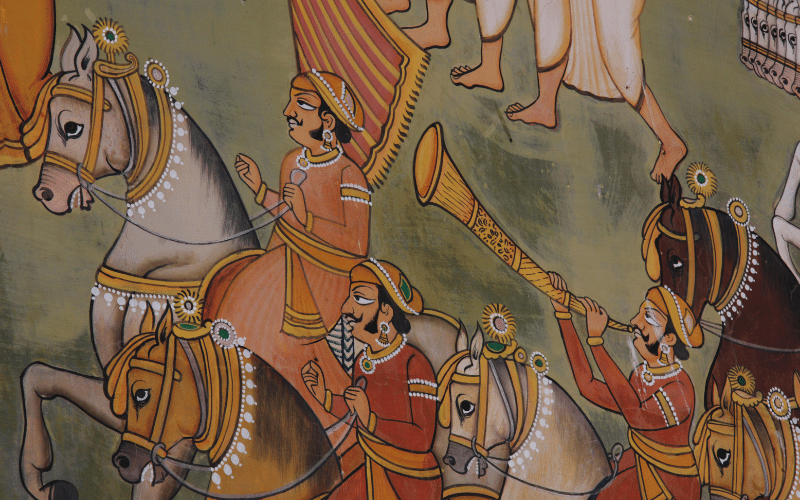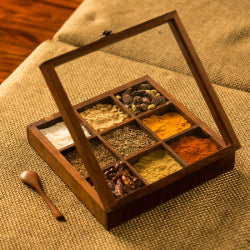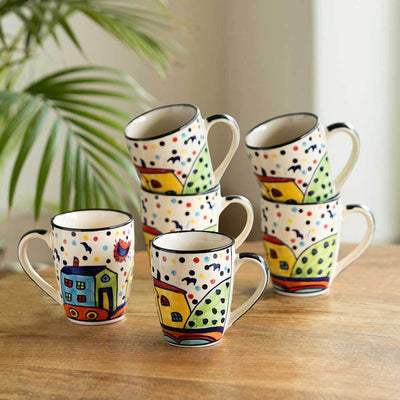Crafts of India: The Voyage of Indian Handicrafts
India’s rich cultural heritage and traditional diversity are reflected by a wide variety of handicrafts made by artisans from all over our country.
The history of handicrafts in India dates back to 5,000 BC when handmade crafts were primarily centred around religion. Several types of arts and traditional crafts of India that can be seen in modern exhibits date back to the Indus-Valley civilisation, which flourished around 3,000 BC. Indian crafts underwent a major development during the Vedic Age and continued to advance in the fields of textile, stone, metal, painting, pottery, and wood.
Then, in the third century BC, fashion changed, and the craft of sculpting and the production of modern jewellery flourished during the Mauryan era. The Gupta era (320–647 AD) saw great skill in stone carving, weaving, woodcarving, sculpture, and jewellery-making. The later-era handicrafts of textile, leather goods, and metalworking revealed a strong British impact on Indian crafts, which later changed in line with traditional arts and crafts of India.
The findings from the ancient civilizations in our country suggest that Indian handicraft history dates back to almost 5000 years from now. The Indian handicrafts have evolved with the passage of time-based on the needs of the people, changing trends and religious values. In ancient times, these handicrafts were exported via the silk route to countries like Europe, Africa, West Asia and even today, they are incredibly popular among foreign tourists. The traditional Indian handicrafts have stood the test of time and are still regarded as one of the most intricate art forms in the history of the world. Thousands of local artists work hard day and night to create exquisite pieces of crafts. These handicrafts are elegant looking and are preferred by the people to decorate their houses, or these make excellent gifting options for your loved ones.
Scroll down to read about the present-day traditional crafts of India, which are known for their surreal beauty worldwide
Indian Paintings
It is one of the ancient crafts of India and its traces can be found in the stone age. Since then, it has evolved greatly, being influenced by western culture and styles. Initially, they were made for religious purposes but with time, they have grown into becoming a great piece of wall décor, and home décor. There are a wide variety of Indian paintings in the market today that will leave you amazed with their unique designs.

Madhubani Paintings
Originated from the Mithila region of Bihar, these paintings are known worldwide for their geometrical patterns, and representation of Indian festivals, rituals, etc. The colours used in the Madhubani paintings are derived from natural sources, these colours are vibrant and eye-catching. Objects like twigs, matchsticks and fingers are used to paint. It is widely believed that Madhubani paintings originated at the time of Ramayana when Goddess Sita’s Father, King Janaka asked the painters to make some paintings for his daughter's wedding with Lord Rama. Since then, this art has been passed down from generation to generation and continues to be one of the beautiful traditional art and craft of India drawn by the hand of all time.
Madhubani paintings are largely practiced by women of the region, especially on the walls of their houses. Their paintings reflected their hopes, thoughts, dreams and opinions. Over time, these paintings started illustrating different festivities and rituals like weddings.
Warli Art
The origins of the warli art form can be seen from around 3000 BC in the borders of Maharashtra and Gujarat. They can be spotted on the red ochre walls of the villages of Maharashtra and Gujarat. Geometric patterns are painted in white colour illustrating wedding rituals, flowers, day to day activities of the villagers, etc. Today, it is quite popular among the people and can be seen on vases, pots and several other accessories of home décor. This Indian craft famous worldwide for their minimalist patterns and intricate designs. We can easily spot a circle, triangle and a square in a warli art painting, here the circle represents the sun and the moon and the triangle is an illustration of mountains and trees.
Tanjore Paintings
Tanjore paintings, otherwise known as Thanjavur paintings are regarded as the pride of South India and one of the most famous south Indian handicrafts. Developed in the late 16th century, these paintings demonstrate the scenes from early Purana Katha. They are used for home décor in the present day due to their timelessness and are considered as a symbol of wealth among the elite class. These beautifully painted Tanjore paintings depict Hindu deities or religious texts. Even precious stones like diamond, ruby, sapphires, etc are used to embellish these paintings which make these paintings one of the most expensive handicrafts which only a few could afford. If you are on a hunt for traditional crafts of India, this one is unmissable.

Pattachitra
Pattachitra is regarded as one of the oldest art forms in India originated from Odisha. This traditional painting depicts Hindu mythology and folklore. It is a beautiful display of one of the finest traditional products of India, done using excellent craftsmanship. With time, it has evolved into a part of Indian accessories and home décor products. The name “Pattachitra” has originated from the words “Patta” (cloth) and “Chitra” (painting). Pattachitra painting is a unique blend of traditional Hindu mythology and the folk culture of India. The colours used in the paintings are naturally derived and eco friendly. Usually, red, green, blue, white, yellow colours are added to the painting to give it a vibrant look.

Indian Metal Work
The origin of art on metallic objects goes back to 5000 years now. In ancient times, the metal sculptors used various metals like silver, iron copper and alloys like bronze to make pans, mythological figures, animals, drummers, pots, etc. This metalwork can be seen in different parts of our country.

Dhokra Art
The origins of Dhokra art dates back to 4000 BC when a metal sculptor in the Mohenjo-Daro civilization created a unique sculpture of a dancing girl. This marked the discovery of one of the oldest methods of non-ferrous metal casting technique known to humankind. This traditional handicraft of India has its roots spread to various states on the eastern coast of India, including the states of Madhya Pradesh, Bihar, West Bengal and Odisha since then. The talented craftsmen use lost wax techniques to create marvellous brassware artefacts. Usually, the miniature figurines of animals, mythical characters, tribal people, drummers, etc., are created using Dhokra art. The name “Dhokra” has its origins in Dhokra Damar Tribes, known for their excellent metalwork.
Nowadays, Dhokra art can be seen in home décor items including vases, pots, wall hangings, etc.
Bastar Iron Craft
Traditional iron craft manufactured in the Bastar district of Chattisgarh is immensely popular all over the nation. This craftwork is protected under the Geographical indication (GI) of the Agreement of Trade-related Aspects of Intellectual Property Rights (TRIPS) agreement. This ancient craft of India is known for its simplistic nature and was initially started by the ironsmiths of the Chhattisgarh region. Today the metalsmiths are taking a modern approach to suit the needs of the present-day population.

Indian Pottery
Pottery is practiced by a large number of people in the Indian subcontinent and is one of the best representations of Indian cultural heritage. Many social, cultural and economic factors of the present day have influenced the style of pottery work. But the intricate detailing and excellent craftsmanship of the potters are still intact. In the beginning, pots were primarily made up of clay and were used as matkis to extract water from the well or store water, but today, the pottery work has evolved as one of the most famous traditional arts and crafts of India. Pottery is available in various forms and structures such as ceramic and porcelain pots available online for home decoration.

Studio Pottery
Pottery made by professional or amateur craftsmen is referred to as Studio pottery. Usually, tableware, cookware and related items are created by the studio potters. In India, amateur artists from different corners come together and form small groups to create unique pieces of pottery.
Blue Pottery
Blue pottery the world-famous traditional craft of India hails from Jaipur, Rajasthan. The striking blue dye is used to colour the pottery, hence named as blue pottery. The majority of the ceramics are decorated with animal and bird designs, and some of it is semi-transparent. Due to its use of Egyptian paste, glazing, and low firing, the pottery has a distinctive look. The use of a unique dough made by combining water, Multani Mitti (Fuller's Earth), borax, gum, quartz stone powder, and powdered glass with other ingredients, this pottery art form sticks out from all other types of pottery. Tiles, doorknobs, pots, vases, and plates are among the exquisite decorative Indian crafts are made using this pottery.

Khurja Pottery
This traditional craft of India originated in the small town of Khurja, western Uttar Pradesh. The Khurja pottery continues to win hearts with its colourful and vibrant looks. The history of this pottery dates back to a few centuries when some wounded soldiers from the Mughal emperor Timur's army decided to stay back and start a profession as potters. They developed the technique that is used to make Khurja pottery in the present day. Even today, the potters at Khurja town are masters of making ceramic pots. Today this pottery work is used to make vases, lamps and dishes that are used as home décor items. Khurja pottery comes in different shapes, sizes and bright colours.
Indian Woodwork
Woodwork is a popular traditional product of India famous worldwide Handmade furniture with exquisite detailing and high-quality raw materials are gaining huge popularity among people. You can also see wooden work on home décor items.

Mysore Rosewood
Mysore is famous all over the world for its beautiful and elegant rosewood inlay work. You will find the inlay work in the furniture including dining table, sofa sets, coffee tables, side tables, and other furniture items. There are excellent pieces of wall décor and home décor items made by Mysore rosewood which will enhance the aesthetics of your house. Thousands of people in Mysore are involved in the rosewood inlay work. It is one of the classiest south Indian handicrafts.

Kashmir Wood Carving
Kashmiri walnut wood carving has gained immense popularity among foreign tourists over the last decades. The walnut wood has an aesthetic appeal and thus people often buy the wooden carved items to decorate their homes and offices. Various items ranging from furniture to accessories to vases, boxes, trays, etc are made out of Kashmiri walnut wood. Walnut wood is quite expensive and the carving requires a lot of hard work and dedication. It has great significance in the history of handicrafts.

If you are looking for perfect pieces of Indian Handicrafts to decorate your living rooms, kitchens, bedrooms and dining rooms, ExclusiveLane.com brings you a wide range of handicrafts that will catch the attention of your guests. Gift your loved ones a touch of Indian tradition with these exquisite pieces of articles.
FAQs About Indian Handicrafts
What is an example of the traditional craft of India?
Traditional art and crafts of India range in complexity from finely woven silk to something as basic as a basket.
Which is the ancient craft of India?
Presently, there are different crafts in India, but the first type of craft to have existed in India is clay craft. For millennia, the rural populace has created and used basic earthenware made of clay or ceramic.
What is the importance of traditional handicrafts of India?
Indian crafts are a substantial and vital part of the nation’s economy. While preserving the nation's cultural heritage, the traditional handicraft industry employs a sizable group of artisans in rural and semi-urban areas and contributes significantly to the country's foreign exchange.
How many crafts are there in India?
India is home to more than 3000 crafts spread across the whole country.(1)
What is the craft of Indian culture?
Indian handicrafts have kept their exclusivity throughout the centuries, such as the Kashmiri woollen carpets, Zari embroidered fabrics, terracotta and ceramic products, silk fabrics, etc.
What are 10 examples of different crafts in India?
Papier Mache, Ceramic Pottery, Embroidery, Block Printing, Regional Paintings, Glass Work, Wood Crafts, Stone Crafts, Leather Crafts and Jewellery Making are some of the famous traditional handicrafts of India.
What are the 6 types of traditional arts and crafts of India?
Leatherwork, Ceramics and glass crafts, Fibre and textile crafts, Needlework, Paper crafts and Flower Crafts are the 6 main types of traditional products in India.










Great Blog! Thanks for sharing this awesome knowledge with us, You can also check Kaarigari Foundation. Kaarigari Foundation is the home for ArTiecture -Art, and Architecture for artists and architects!This non-profit initiative is fuelled by the motive – every artist is able to showcase their work. India is a land of artists and art forms. A lot of artwork is unrecognized and talent does not get its due recognition. To know more visit – https://www.kaarigarifoundation.com/
Leave a comment